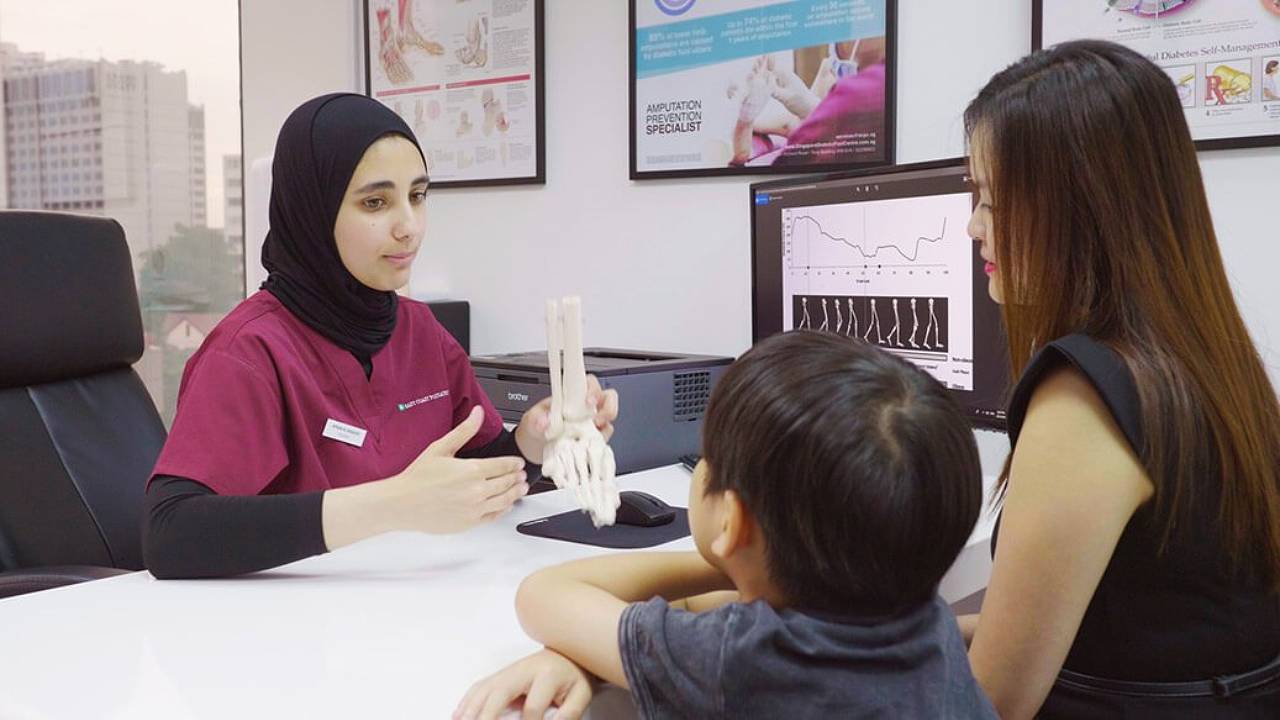Toe walking occurs when children tip-toe and walk on the balls of their feet without contact between their feet and the ground. It is a common pattern of walking in children under the age of two, as they are in the process of learning to walk. Most children outgrow toe walking and begin to walk with a normal heel-to-toe pattern by the age of two. Some children may continue to toe walk due to habit or tightness of their posterior muscles and tendons.
However, in selected cases, this may be a sign of an underlying medical condition such as cerebral palsy, muscular dystrophy or spinal cord abnormality. Toe-walking may also be sensory-related, as it is also often seen in children with autism-related conditions.

Signs and symptoms
Some children have no specific complaints, but their parents may be concerned about their walking pattern and the possibility of it affecting their gait as they grow. If the child is able to walk flat-footed and normal when asked to do, it is most likely habitual toe-walking which only requires simple conservative interventions and consistent supervision by parents to correct.
However, for children over the age of 5, it is typical for those who continue to toe walk to experience difficulty or even an inability to walk with their heels down. Physiological symptoms and difficulties with footwear or participating in sports and other daily activities may arise.

Toe-walking interventions
Interventions for toe-walking depends on a number of factors, including but not limited to:
- The age of the child
- Root cause
- Ability to walk flat-footed
Beginning with a comprehensive consultation and assessment, your podiatrist will determine the cause of your child’s condition, and obtain an accurate diagnosis. This information is used to devise the most suitable podiatric plan, tailored to meet the individual needs of the child.
The recommended approach will include stretching the muscles and tendons in the calves daily; however, advanced therapies such as radial extracorporeal shockwave therapy may be required for faster muscle tension release. Casting or bracing will also help to support the foot and leg in order to encourage a normal gait. This can be done through ankle-foot orthotics and custom foot orthotics.
In some rare cases, surgical procedures to lengthen the Achilles tendons may be required. This is meant to improve foot and ankle joint range of motion, allowing normal gait function.
It is recommended to consult with a podiatrist if you have concerns regarding your child’s walking patterns. Most children improve over time and are able to participate in sports and daily activities. To encourage this, it is important to have a detailed consultation and proper diagnosis with your podiatrist to identify possible outcomes and the best strategy for your child.




